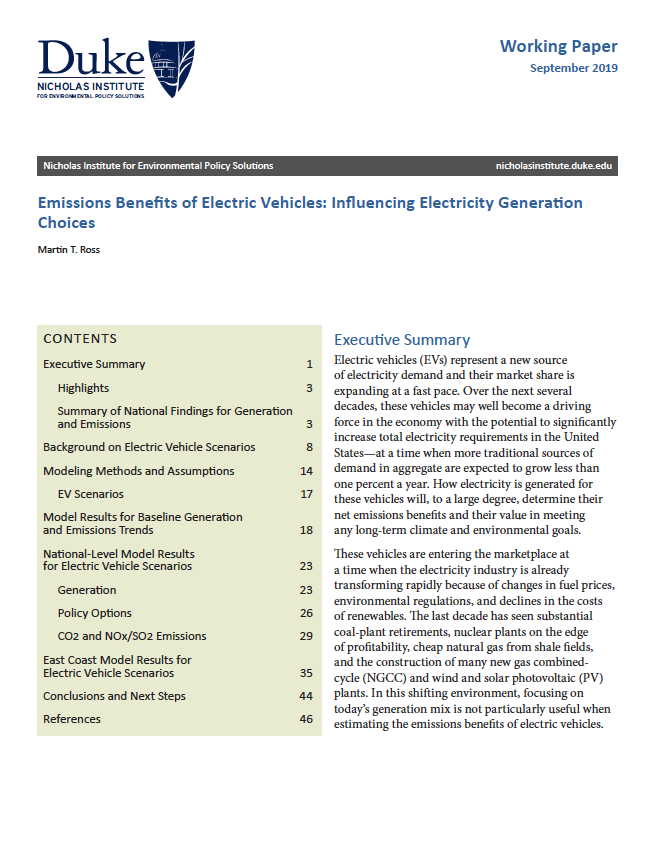Electric vehicles (EVs) represent a new source of electricity demand and their market share is expanding at a fast pace. Over the next several decades, these vehicles may well become a driving force in the economy with the potential to significantly increase total electricity requirements in the United States—at a time when more traditional sources of demand in aggregate are expected to grow less than one percent a year. How electricity is generated for these vehicles will, to a large degree, determine their net emissions benefits and their value in meeting any long-term climate and environmental goals.
These vehicles are entering the marketplace at a time when the electricity industry is already transforming rapidly because of changes in fuel prices, environmental regulations, and declines in the costs of renewables. The last decade has seen substantial coal-plant retirements, nuclear plants on the edge of profitability, cheap natural gas from shale fields, and the construction of many new gas combined-cycle (NGCC) and wind and solar photovoltaic (PV) plants. In this shifting environment, focusing on today’s generation mix is not particularly useful when estimating the emissions benefits of electric vehicles.
For more on the policies that could maximize the air quality benefits of vehicle electrification, see “Vehicle Electrification: Coordinating Transportation and Power Sector Policies to Maximize Air Quality Benefits.”


